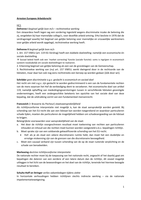Essay
Unit 15 - Learning Aim A&B Distinction Achieved
- Course
- Institution
Describes electrical circuits including symbols, units and definitions, conductance and resistance, Theoretical circuits, Kirstchoffs First and Second Laws, Electrical Properties and Use of materials, Ohmic and Non-Ohmic conductors, Insulators and Conductors, Capacitors, Semi conductors.
[Show more]












